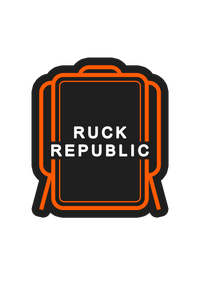Rucking - A Zone 2 Heart Rate Training
What is Zone 2 Training?
Zone 2 training involves exercising at a heart rate that is 60-70% of your maximum heart rate. This intensity level, often referred to as the "aerobic zone," relies primarily on the aerobic energy system. The body uses oxygen to convert stored fats into energy, making it efficient for long-duration activities. Zone 2 training is fundamental for building a strong aerobic base, enhancing endurance, and improving overall cardiovascular health.
How to Do Zone 2 Training
- Heart Rate Monitoring:
- Determine your maximum heart rate (HRmax). A general formula is 220 minus your age.
- Calculate 60-70% of your HRmax to find your Zone 2 range.
- Use a heart rate monitor to ensure you stay within this range during exercise.
- Exercise Selection:
- Choose activities that can be sustained for extended periods, such as running, cycling, swimming, or rucking.
- Consistency and Duration:
- Engage in steady, continuous exercise without significant bursts of intensity.
- Training sessions should last between 1-2 hours to maximize aerobic benefits and fat utilization.
Benefits of Zone 2 Training
- Improved Aerobic Capacity: Enhances the cardiovascular system's efficiency, increasing the body's ability to utilize oxygen, which is crucial for endurance sports.
- Fat Utilization: Trains the body to burn fat as a primary fuel source, aiding in endurance and weight management.
- Increased Mitochondrial Density: Stimulates the production and efficiency of mitochondria, the powerhouses of cells, enhancing energy production.
- Recovery Enhancement: Lower intensity helps in active recovery, reducing the risk of injury and overtraining.
- Endurance Improvement: Sustained energy levels over longer periods improve overall stamina and endurance.
Comparison of Zone 2 Exercises: Running, Cycling, and Rucking
Running in Zone 2:
- Pros:
- Highly effective at improving cardiovascular health and increasing VO2 max.
- Typically covers more distance in less time, making it efficient for those with limited time.
- Requires minimal gear – just a good pair of running shoes.
- Cons:
- Higher impact on joints, leading to potential injuries like shin splints, knee pain, or stress fractures.
- Can cause repetitive strain injuries if not done with proper form and progression.
- May be challenging for those with existing joint or mobility issues.
Cycling in Zone 2:
- Pros:
- Low-impact exercise, reducing the risk of joint injuries.
- Great for building leg strength and endurance.
- Can cover long distances without the high impact associated with running.
- Cons:
- Requires a bicycle and appropriate gear, which can be costly.
- Road cycling can be risky due to traffic and environmental factors.
- Can cause discomfort in the lower back and neck if proper posture is not maintained.
Rucking in Zone 2:
- Pros:
- Builds muscular endurance in the legs, core, and back due to the added weight.
- Generally lower impact on joints compared to running, reducing the risk of injury.
- Can be performed almost anywhere, with adjustable weights to suit different fitness levels.
- Burns a significant number of calories while being gentler on joints.
- Cons:
- Covers less distance compared to running or cycling in the same amount of time.
- Requires a good backpack and appropriate weight, which might not be as readily available as running shoes.
- Improper technique can lead to back and shoulder strain.
Why Rucking is the Better Choice for Zone 2 Training
While running and cycling are excellent Zone 2 exercises with unique benefits, rucking stands out for several reasons:
- Lower Impact on Joints: Rucking is gentler on the joints compared to running, making it suitable for people with joint concerns or those recovering from injuries.
- Strength and Endurance Combination: The added weight of the backpack builds not only cardiovascular fitness but also muscular strength and endurance, providing a more comprehensive workout.
- Functional Fitness: Rucking enhances functional strength, which can be beneficial for daily activities and overall fitness. It prepares the body for real-world tasks that involve carrying loads.
- Versatility and Accessibility: Rucking can be done almost anywhere and requires minimal equipment beyond a sturdy backpack and weights. This makes it an accessible form of exercise for many people.
Given these advantages, rucking provides a balanced and enduring fitness regimen, leveraging both aerobic and strength benefits, making it a superior choice for Zone 2 training.

